 Your new post is loading...
 Your new post is loading...
At first glance, the weakness in luxury is puzzling because consumer confidence is high and Tiffany's customers still have discretionary income to spend.
But Yarbrough points out that people are increasingly spending on categories other than luxury retail.
"People are still willing to spend on auto, and they're still willing to spend on their homes which are bigger-ticket items," he said.
"They're more interested in cars or homes or experiences," he said, pointing to movies and traveling as examples — not apparel.
An analysis by Jharonne Martis, director of consumer research for Thomson Reuters, confirmed that people were spending their money on hotels and casinos, too, Business Insider's Hayley Peterson reported earlier this month....
Discover new insights about mobile shopping behavior, including the start of the shopping journey and in-store research.
Whether you’re a global brand or the shop around the corner, the shift to mobile is changing your customers’ behavior in and out of the store.
Here, we share five insights into how brands can connect meaningfully with people in real time, in all of their micro-moments.
Two years ago, for the first time, the Direct Marketing Association put a number—$156 billion—on what it called the data-driven marketing economy (DDME) in the United States. Yesterday it released a follow-up report showing that data isn't just driving, it's speeding. It clocked in at $202 billion in 2014, a two-year increase of 35%, and it employed nearly a million people—650,000 more than it did in 2012.“
All of marketing, we estimate, is about $1.3 trillion a year in the U.S., so that makes data-driven marketing a little under 20% of the total," said Harvard Business School professor John Deighton, who directed the study for DMA with Peter Johnson, principal of mLightenment Economic Impact Research....
HappyGrumpy is a new way of conducting polls. It is accurate, rapid and free. You can design and execute sophisticated polls in seconds, then start sampling and tracking public views.
If you need to poll or monitor public opinion, you should start using HappyGrumpy now.
You can monitor public reaction by the hour, day, week or month.
You simply enter your poll subjects, (e.g. person, topic, corporation, product, brand, issue, geography etc.), click go and your poll will execute, save and track statistics over time. You can even download the data or share using social media.
You can do this instantly, (Account Analyzer, Brand Analyzer) just enter your account, subject, issue or brand and see the results in seconds or set up a continuous poll (My Social Polls) which will track your poll day by day.
User reviews have been proven to be a sales driver, through consumers taking time to read third-party reviews from the likes of Trip Advisor and Open Table.
A recent Censuswide survey of 1,000 UK consumers, commissioned by sales promotions experts Opia, found that 77% would be persuaded to make a purchase after reading a positive review, whilst 61% said they would consider pulling out of a purchase if the reviews weren’t good.
As online reviews grow as a reliable source for consumers, more people are choosing to engage directly with the process, with 52% following up their purchase by posting a review.The survey also showed that 61% of consumers decided to leave a review in order to share the great experience they had with a brand, retailer or service provider....
For this holiday season, 80% of consumers plan to spend as much as or more than they did last year, according to a recent report fromSAS.
The report was based on data from a survey of 3,458 consumers in the US, Canada, the UK, Australia, and New Zealand.
The US leads expected spending growth, with 29% of US respondents saying they plan to spend more this year. Most Canadian shoppers, on the other hand, say they are tightening their budgets this year.
Millennial respondents (age 18-29) are the most likely to say they will increase their spending this year, whereas older consumers are the most likely to say they'll stick with last years budget....
Making the most out of data means pulling the right insights and then using that info to figure out what's working—and what's not. “Knowing what is working makes all of the difference,” says Michael Schultz, VP of marketing and business development for marketing platform ClearSlide.
“Far too often marketers are in constant production mode. So rather than analyzing the data and seeing what sticks and why, you get anecdotal feedback about what's supposedly working. So being able to apply analytics—particularly predicative analytics—enables marketers to really zero in on what's really going to matter.”
Predictive analytics, Schultz says, allows marketers to “have a sort of game plan.” He says that crafting content or an entire strategy that's rooted in predictive analytics allows marketers to devise the right plays for success. In fact, Schultz says that looking at customers' past behaviors is like watching the playback films and then analyzing them so that you can create a strategy to win the game.
“Based on a bunch of different factors, [marketers] can recommend plays that guide customers in the order that they would like for them to go follow. It's very prescriptive,” he says....
Findings from the 2015 Pitney Bowes Global Online Shopping Study released today confirm that search engines like Yahoo, Google and Bing remain top choices for consumers to find products online. Furthermore, marketplaces such as eBay and Amazon along with retailers remain dominant for today’s consumer transactions, according to a press release.
The study found that 33 percent of millennials use mobile devices or a mix of devices, compared to 24 percent of overall consumers in the study.
The research further reveals that online shoppers globally share commonalities in discovery and purchase of products but they maintain “unique global shopping preferences and behaviors that vary by country.” Retailers looking to expand their brands globally “should consider cultural norms and shopping preferences of consumers around the world.”...
For decades, Western companies have sought to understand Chinese consumers. And with market research firms now tracking every sector in great detail—from luxury goods to healthcare products to the latest trends in e-commerce—a more sophisticated picture of the market is emerging
.But companies still have much to learn about the cultural gap separating the average Chinese consumer from his or her counterpart in the West—just as they have much to learn about the distinguishing cultural features of any other market, from Brazil to Nigeria to Indonesia. Such knowledge may not have been crucial in the heady days of the 1990s, when the Chinese economy was still emerging and opportunities seemed to be endless.
But now that the market has grown and matured, expanding into China requires a deeper appreciation for the impact cultural tradition can have on consumer psychology.“In the early days, you almost didn’t need a strategy—you could make money as long as you had connections or guanxi,” says Angela Lee, a professor of marketing at the Kellogg School and an expert on cross-cultural issues in consumer behavior.
“But that’s not the case anymore. Now, those companies that have a genuine understanding of Chinese consumer culture are better placed to succeed.”...
What CEOs and the CMOs have come to realize is insights can play a pivotal role in enabling organizations to shift their organization towards customer centricity. Enabling understanding of what customer strategies to implement and how to design marketing effective at connecting with prospective buyers and existing customers.
With the overwhelming amount of data available to corporations, as well as, what can be called the “marketing of insights” by analytics, SaaS, and consulting firms, CEOs, and their teams can get caught in the midst of confusion about what really is a good insight. Confusing it is. We are witnessing top-down big data along with readily available public data broadly categorized as insights. When, in fact, they represent customer information and intelligence gathering organizations have to be good at just to compete....
A Snarketing post by Ron Shevlin
I’ve been conducting consumer research in banking for a number of years now, and while it’s certainly debatable whether I’ve learned anything or not, I would argue that I have learned one thing: There IS such a thing as a stupid question when it comes to market research.
Especially in the field of banking.In general, stupid research questions include those that pose false dichotomies or tradeoffs–like “What’s more painful? a) Going to a bank branch, or b) Sticking needles in your eyes.”
Don’t be surprised if 72% of survey respondents choose the first option. I’d like to stick needles in those people’s eyes…just to teach them to not give stupid answers when completing a survey....
When it comes to your business website, your customers may not even register how specific colors of your product package, website elements, or overall site design are influencing them. That’s why it can be difficult to get accurate customer feedback on your color scheme.
But we can draw some general conclusions about colors and their psychological effects. For instance, green suggests wealth, while blue builds trust, which is one of the reasons why you’ll see a lot of blue-based headers on professional services websites (lawyers, etc.).
The reality is that there are so many messages being thrown at consumers every second of every day that individual voices have a tough time cutting through the noise.That, coupled with the fact there are now 4 million Google searches a minute, marketers really need to be in the right place at the right time.Luckily, countless studies have revealed interesting insights into consumer behavior that are invaluable in the race to gain market share.We’ll talk about 10 of them....
|
Confusion over social and mobile reigns among the ranks of marketers according to the latest edition of The CMO survey by the Fuqua School of Business at Duke University. Much like last year’s survey, CMOs said they plan to invest in social, mobile and digital. However, this year, there’s a catch: Much has been made of the disparity between marketing investment in social media and mobile technology and the return on investment (ROI).Here are three examples...
Even a goldfish can pay attention for longer than most people can nowadays. The ever-decreasing human attention span is one of the the biggest challenges marketers are faced with today.
For those looking to conduct market research through surveys, the fight for our audience's attention can seem incredibly discouraging. How can you expect to improve participation rates when people can't sit still long enough to make it through your questions?
If you want to encourage participation and avoid diluting your data, you've got to find a way to make people want to engage with the content. To learn how, take a look at the infographic below from the folks at qSample. It'll walk you through four interesting and helpful things to consider when crafting your next online survey....
If last year taught marketers one thing, it’s that digital marketing is moving beyond cookies and browsers to deliver the seamless, personalised experiences customers have come to expect.
To help cut through the noise in 2016, Neil Joyce, MD EMEA from marketing technology gorup Signal, zooms in on four problem areas of 2015 and the solutions that will make all the difference in 2016....
Retailers eager to capture the lucrative Millennial market should deploy loyalty programmes that prominently feature mobile technology, embrace the value of peer recommendations and are dedicated to helping Millennials save money on everyday expenses that include driving and gasoline, according to survey results featured in the latest Excentus Insight Series report.
The study entitled The Roads to Rewards: What Drives Millennial Loyalty?, found that Millennials are more willing than their Baby Boomer parents or middle-aged Generation X consumers to switch retailers (78%) or brands (55%) in order to earn fuel savings rewards. Their preferred brand loyalties differ from older consumers by rates of 10%-17%....
The holiday season is once again upon us and this year marketers have an unprecedented opportunity to blow their sales out of the water. For the first time in history, consumers over 50 make up the majority — 51 percent — of all of consumer spending according to just-released data from the U.S. Consumer Expenditure Survey.
While marketers are preoccupied with Millennials — who became the biggest adult age demo this year — consumers over 50 control 70 percent of our country’s wealth, making them a significantly greater holiday sales opportunity than their kids.
One might expect that 50+ would account for the majority of health (63%) and insurance (68%) expenditures. However, when it comes to buying for everyone on their holiday lists, consider that people 50+ are now responsible for 51 percent of all entertainment spending as well as 57 percent of big ticket items such as new cars and trucks....
The global ranking shows Europe is doing pretty well, considering Norway is the number two with $2,448 spent online per average customer in 2015. Only the average revenue per user in Hong Kong was higher, with $2,868. In total, seven European countries ended in the global top 10, which consists of: Hong Kong, Norway, Israel, the United States, Denmark, the United Kingdom, Switzerland, Finland, Sweden and Ireland....
When we talk about the “digitization” of society, we often focus our attention on the younger generations. And it makes perfect sense to do so. They have grown up with the technology in their hands. They don’t know of a reality in which they can’t Google something, or WhatsApp someone, or post a pic on Instagram. In turn, businesses have targeted this younger generation—the Millennials—with rich, engaging digital experiences in an effort to win their hearts, minds, and wallets. Only, in focusing just on Millennials, they are alienating a huge demographic; a demographic that is spending more time online that any other.
Before I do the big reveal, let’s look at how “time spent online” has changed in just a year....
So who’s spending all this time online? If not Millennials, then which demographic is it? Drum roll please… Baby Boomers. That’s right, where 45% of our total sample pool spent more than 15+ hours online outside of work, 51% of Baby Boomers indicated that they spent 15 or more hours online each week....
If you listen to marketers and advertisers, the key to success these days is targeting. “The right ad to the right person at the right time” is the common mantra.
Nope, says a new survey from brand expert network Experticity, the 2015 Marketing Mix Survey. The key driver in making a sale is the trust possessed by a source of product information.
Conducted by ReRez Research, the survey finds that 83 percent of marketers think advertising — online, broadcast, and print — is effective in influencing buyer decisions. But less than half of consumers — 47 percent — trust or believe advertising....
The brainiacs at Harvard and Stanford are at it again. Just this past month in the Journal of Marketing Research, several Ivy School consumer neuroscience researchers led by Dr. Uma Karmarkar, whom I had the opportunity to interview for this piece, explained to me how putting the price first (called price primacy)—before a user sees the actual product—affects buying behaviors.
Specifically, according to the researcher’s comments in a Working Knowledge magazine exposé, “that price primacy (viewing the price first) makes consumers more likely to focus on whether a product is worth its price, and consequently can help induce the purchase of specific kinds of bargain-priced items.”
Mind. Blown. Let’s look at three pricing strategy examples and some specific takeaways from Karmarkar’s findings to see how we can repurpose her research and turn it into actionable solutions....
Some 58% of consumers in the United States say they have shopped online while watching TV, according to a recent report from Blackhawk Engagement Solutions.
The report was based on data from an April 2015 survey of a nationally representative sample of 2,608 adults in the United States.
The most popular time for online shopping is between 4 PM and 9 PM, local time, with 48% of respondents saying that's when they do so. Some 37% of consumers admit to shopping online while at work; 18% say they do so often, and 19% say they do so sometimes.
In-Store Behavior - 40% of respondents say they use their smartphone camera to demo, share, and compare products they find in-store. - 19% have purchased a product from a competitor on their smartphone while being in-store. - 38% say Amazon.com is their first choice for comparing prices on their smartphone....
Ever wish you could read the minds of your target audience? Google Consumer Surveys is the next best thing. It allows you to survey the web with a tool so precise, it predicted the 2012 U.S. presidential election. And don’t worry – it’s affordable and easy to use.
How does it work? You start the process using the simple three-step creator, which will walk you through targeting your audience. You can choose to get a representative sample of your country’s population, or target a more specific audience by age, gender, geography, and a screening question to help further narrow your audience. You also have your choice of ten different question formats, including multiple choice, star-rating, image selection and more.
So when your survey goes out into the world, where is it going, exactly? That’s your choice. You can choose to distribute your survey through Google’s network of online publishers, or via the Google Opinion Rewards mobile app....
Mason Nelder, Director of Consumer Insights at Verizon, joins the Social Pros Podcast this week to discuss the incredible advantages, the challenges, and the long-term company-wide transformations made possible through the customer insights gained....
So, how do you prove that this system is actually working? Verizon has actually moved away from proving the results of social media. Instead, it’s more about proving out how they’re dealing with issues they’re seeing come up. (highlight to tweet) It used to be about “If we do this, we save this much money,” or “If we do this, we make the experience this much better.”
Now Mason and his team are trying to wrap their heads around how to measure that experience in total.Looking at the long-term effects of the changes Verizon makes based on consumer insights, Mason and his team are looking at what people think about the brand and how easy it is to do business with Verizon. “The long-term effect is: Do people stick with you? Do people think you’re easy to do business with? Do people love you because of how you connect them to their network?”...
|
 Your new post is loading...
Your new post is loading...
 Your new post is loading...
Your new post is loading...








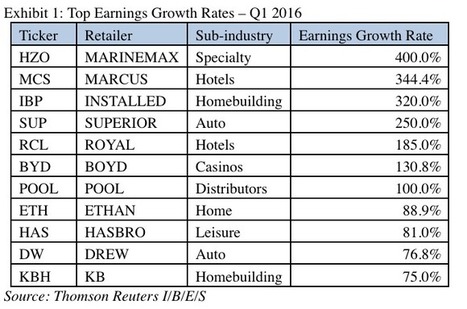

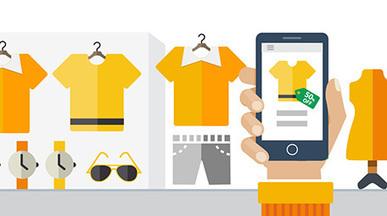





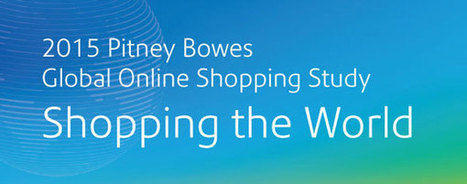





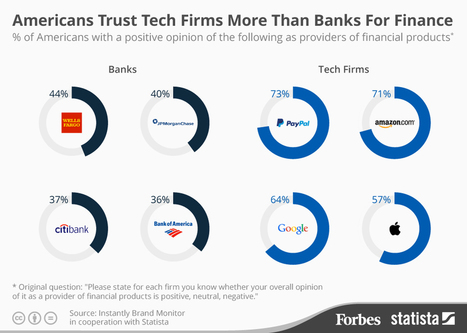


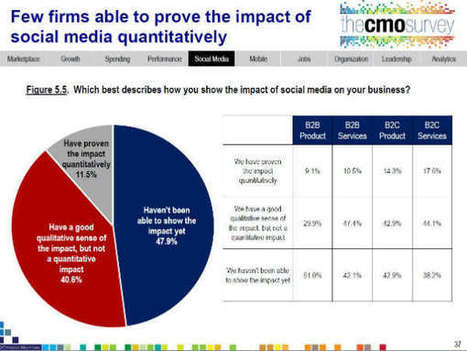
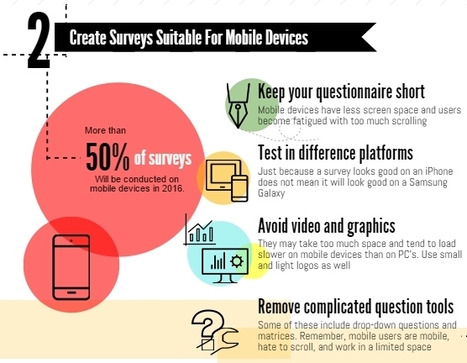



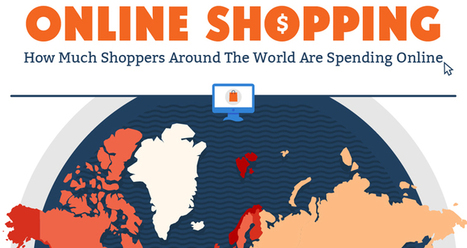

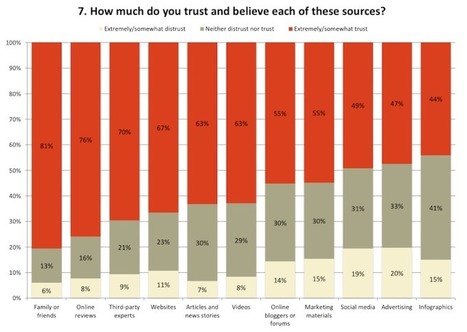
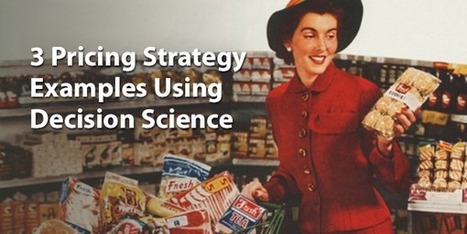








Valuable look at consumer shopping trends and changes. Marketers take note